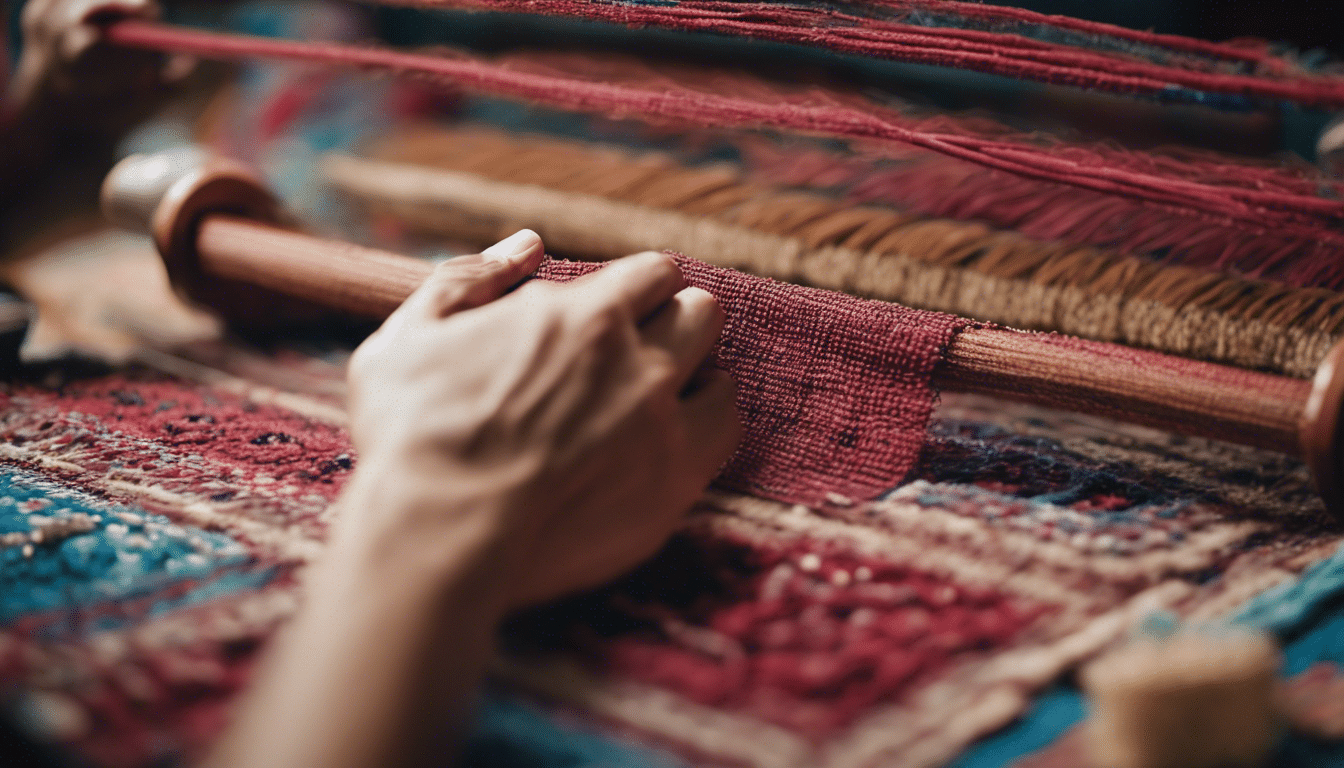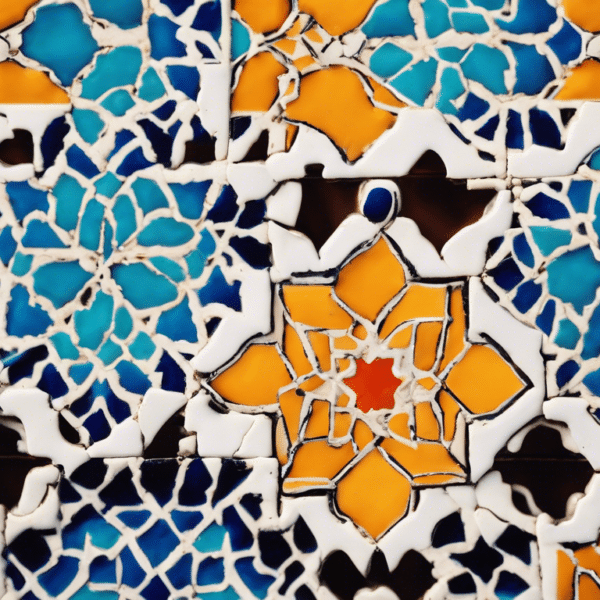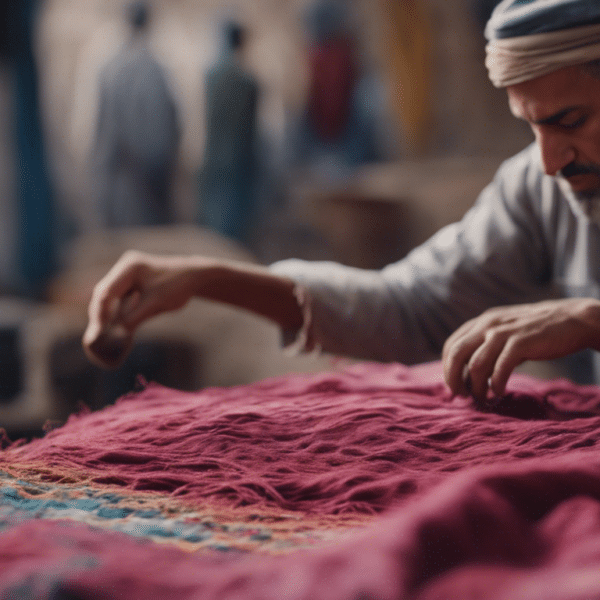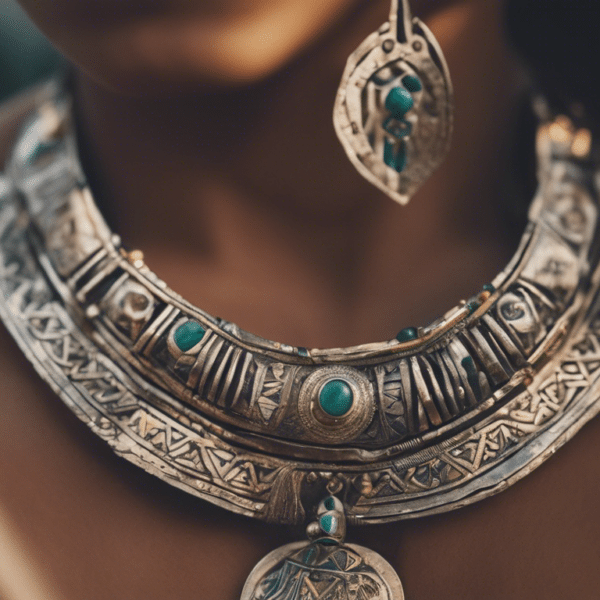Embark on a mesmerizing journey through the warp and weft of Morocco’s soul, its rugs! In the heart of bustling medinas and tranquil Berber villages, a mesmerizing story unfolds—one of skillful hands weaving not just threads but tales of heritage and heart. Discover the age-old techniques that craft these woven wonders, where every knot and color is a whisper of Moroccan tradition. Join me, as we unravel the secrets behind the intricate creation of Moroccan rugs, a craft suffused with the magic of ancient artistry and modern allure. Let’s tread softly into a world where each rug tells its own vibrant story, waiting to be read by those who cherish timeless beauty. Let the loom’s melody guide your senses into the fabric of Moroccan life, as we explore the tapestry of tradition that is… the Moroccan rug.
The Art of Weaving Moroccan Rugs

Immersed in the heart of Moroccan tradition lies an ancient craft that tells tales of regions, tribes, and generations. The art of weaving Moroccan rugs is a cultural symphony of color, patterns, and intricate designs. Each rug narrates a unique story, a silent yet profound record of the Moroccan heritage.
Tradition passed through the looms of time has seen Moroccan weavers, predominantly women, taking pride in the creation of these majestic textiles. The rhythmic motion of their skilled hands transforming fine threads into sprawling, vivid tapestries is a dance of cultural expression.
A journey through materials and dyes
It begins with the purest of materials – locally sourced wool, often from the herds that roam the Atlas Mountains. This wool is spun into yarn, a strong and resilient base for what will soon be a mesmerizing work of art. The natural dyes used to color the yarn are derived from the environment; walnut shells, pomegranate rind, indigo, and saffron are just a few pigments used to create a spectrum of colors that mirroring the Moroccan landscape.
The symbolism woven within
Within the threads of a Moroccan rug, symbols are woven that carry deeper meanings. They may represent fertility, protection, strength, or good fortune. The Berber tribe, for instance, incorporates ancestral amulets and female-centric motifs into their weaves. The brilliance in these motifs is not just in their visual appeal, but in their storytelling prowess – they act as a visual language known only to those within the community.
The diversity of styles across regions
Moving from region to region in Morocco, one can observe a blossoming diversity in rug design. The Beni Ourain, a minimalist style using creamy white wool with simple black or brown geometric patterns, hails from the Middle Atlas Mountains. In stark contrast, the intricate kilims of the Haut Atlas boast more color and complexity. The Zemmour rugs from the Central Atlas region display a harmony of red, green, and orange hues, while the Boujad rugs exhibit a bold use of pink and purple shades.
Each style proclaims its origin story; each weaver injects a bit of their soul into the creation. Thus, the very act of rug selection becomes deeply personal, as if choosing a piece of history to take home.
The techniques behind the tapestry
The traditional loom is central to rug weaving. Vertical or horizontal, it becomes an extension of the weaver’s intent. The two primary weaving techniques are knotting and flatweaving, with the former generating a fluffy pile while the latter offers a smoother finish. The knotting technique further divides into the Berber knot and the symmetrical Turkish knot – the chosen method greatly influences the final texture and pattern of the rug.
Preserving the craft in modern times
In the age where mass production and synthetic alternatives flood markets, Moroccan rug artisans hold fast to their cultural treasures. Cooperatives thrive, empowering women and ensuring that their expertise, honed over centuries, is not lost. They keep the tradition alive, not only for its economic importance but for the sake of preserving an art form that encapsulates the soul of Moroccan culture.
For the aficionado or the casual admirer of Moroccan crafts, these rugs are not mere floor coverings; they are canvases of historical dialogue, waiting to tell their story. As you trace your fingers over the knots and weaves, you connect with the hands that poured their tradition and lives into these beautiful artifacts. The art of weaving Moroccan rugs is a chronicle of a people’s heart, an ongoing saga of resilience, beauty, and the human touch.
The History of Rug Weaving in Morocco

The story of Moroccan rugs is woven into the very fabric of the country’s history. Like a tapestry strewn with color and complexity, the narrative stretches back centuries, illuminating the blend of tribal traditions and artistic expressions that make up this magnificent craft.
Rug weaving in Morocco is an art form, deeply rooted in the lives of the people, and each knot is a testament to their ancestral wisdom and heritage. The rugs are more than mere objects; they are repositories of cultural identity, conveying the stories, beliefs, and lifestyles of the Berber tribes, also known as the Amazigh.
One can trace the origins of Moroccan rug weaving back to the Paleolithic era, where the indigenous Berber tribes would create handwoven textiles for practical uses such as bedding and blankets to protect against the cold Atlas Mountains. Over time, these utilitarian objects evolved into intricate works of art.
The uniqueness of each rug is a reflection of the diversity of Morocco’s regions and the creativity of its people. Every tribe has its own patterns, symbols, and techniques, passing them down through generations, making each rug a personal and collective legacy.
The symbolic language of Moroccan rugs
Moroccan rugs are not just celebrated for their craftsmanship but also for their rich language of symbols and motifs. Each pattern holds a story, a wish, or a prayer—often related to fertility, protection, or the spiritual world. The symbols woven into the rugs are believed to possess talismanic properties, offering protection and bringing good fortune to their owners.
The designs can range from simple geometric shapes to elaborate compositions, each inspired by the weavers’ surrounding environment and personal experiences. Thus, these rugs do more than decorate—they serve as a form of communication, carrying the whispers of Moroccan lore from one generation to the next.
Diverse weaving styles across regions
Morocco’s regional diversity is mirrored in its array of rug styles, with each area boasting its own unique weaving techniques. In the Middle Atlas region, the Beni Ourain tribes are renowned for their minimalist designs and plush, high-pile wool rugs. These are often marked by natural ivory and black wool, featuring simplistic lattice or diamond patterns which have become highly sought after globally.
In contrast, the nomadic tribes of the Sahara weave flat-woven kilims that are more suitable for the hot desert environment, displaying vivid colors and sharp geometric designs. Meanwhile, the tribes of the High Atlas create densely knotted rugs with strong reds, oranges, and blues, often incorporating cultural narratives into their motifs.
The process of rug making in Morocco
The sacred art of Moroccan rug making starts with the shearing of sheep, followed by the spinning and dyeing of the wool. Using natural resources such as plants, minerals, and even insects, a stunning palette of vibrant colors is created. The dyed wool is then expertly hand-knotted by female artisans on vertical looms, a skill that requires immense patience and precision.
Each rug can take weeks, months, or even years to complete, depending on the complexity of the design and the size of the rug. It’s not a mere manufacturing process but rather a ritual, a meditation, and a sharing of life through the intertwining of threads.
Preserving the tradition of Moroccan rug weaving
Today, the tradition of Moroccan rug weaving faces challenges as modernization and mass production loom over the horizon. Yet, there’s a resurgence of interest in these authentic handcrafted pieces, with connoisseurs and ethical consumers alike seeking to preserve this age-old art.
Organizations and cooperatives have emerged to empower local artisans, especially women, by promoting fair trade practices and sustaining their crafts. This way, the intricate mastery of Moroccan rugs continues to be a source of economic livelihood and cultural pride, ensuring the art form endures for future generations.
Moroccan rugs, with their deep historical roots and cultural significance, are indeed a woven testament to Morocco’s rich artistic heritage. No wonder they capture the imagination of those who encounter them, inviting not just a glance but a journey through the heart of Morocco’s soulful craft.
Understanding the Different Types of Moroccan Rugs

The allure of Moroccan rugs lies in their rich tapestry of cultural vibrancy, heritage, and artistry. Woven into each rug are the stories, the traditions, and the skilled craftsmanship that have been passed down through generations. To grasp the diversity and beauty of Moroccan rugs is to embark on a journey through the very soul of Moroccan craft.
The Intricacies of Tribal Rugs
Morocco’s rugged Atlas mountains are home to a multitude of tribes, each imprinting their unique motifs and styles onto the rugs they craft. Among the most renowned are the Berber tribes, including the Beni Ourain and the Azilal. The Beni Ourain rugs, characterized by their minimalist design and undyed wool, bring a sense of warmth and authenticity to modern interiors. Azilal rugs, on the other hand, are a canvas of exuberant colors and abstract patterns, each rug a distinct reflection of the weaver’s thoughts and emotions.
Urban Elegance in City Rugs
Venturing into the urban centers, Moroccan rugs take on a different character. The Rabat rugs are a testament to the artistry of Moroccan weavers, with their elaborate designs and the meticulous symmetry that adorns them. Rich reds and navy blues dominate, giving these rugs an air of regal sophistication.
Flatweaves and Kilims
While plush piles define many Moroccan rugs, the flatweave techniques are no less significant. Moroccan Kilims are especially popular for their versatility and lightness, making them perfect for a variety of interior spaces. Their geometric patterns and vibrant hues are a nod to the ancient weaving traditions, yet they sit comfortably in contemporary settings.
The Utility of Hanbel Rugs
In regions where nomadic life still vibrates, Hanbel rugs address practicality with their lighter, flatweaves, which are easy to transport as tribes move across the terrain. Yet this practicality does not diminish their artistry; Hanbels are adorned with patterns that narrate the tales of nomadic life.
Each Moroccan rug, from the plush pules of the Atlas to the flatweaves of the desert, carries with it a piece of heritage, meticulously woven, knot by knot, into a fabric that is more than just decorative – it’s a cultural emblem. Exploring the different types of Moroccan rugs is not merely about appreciating their aesthetic appeal; it’s about immersing oneself in a storied tradition that continues to flourish with each weave and color.












